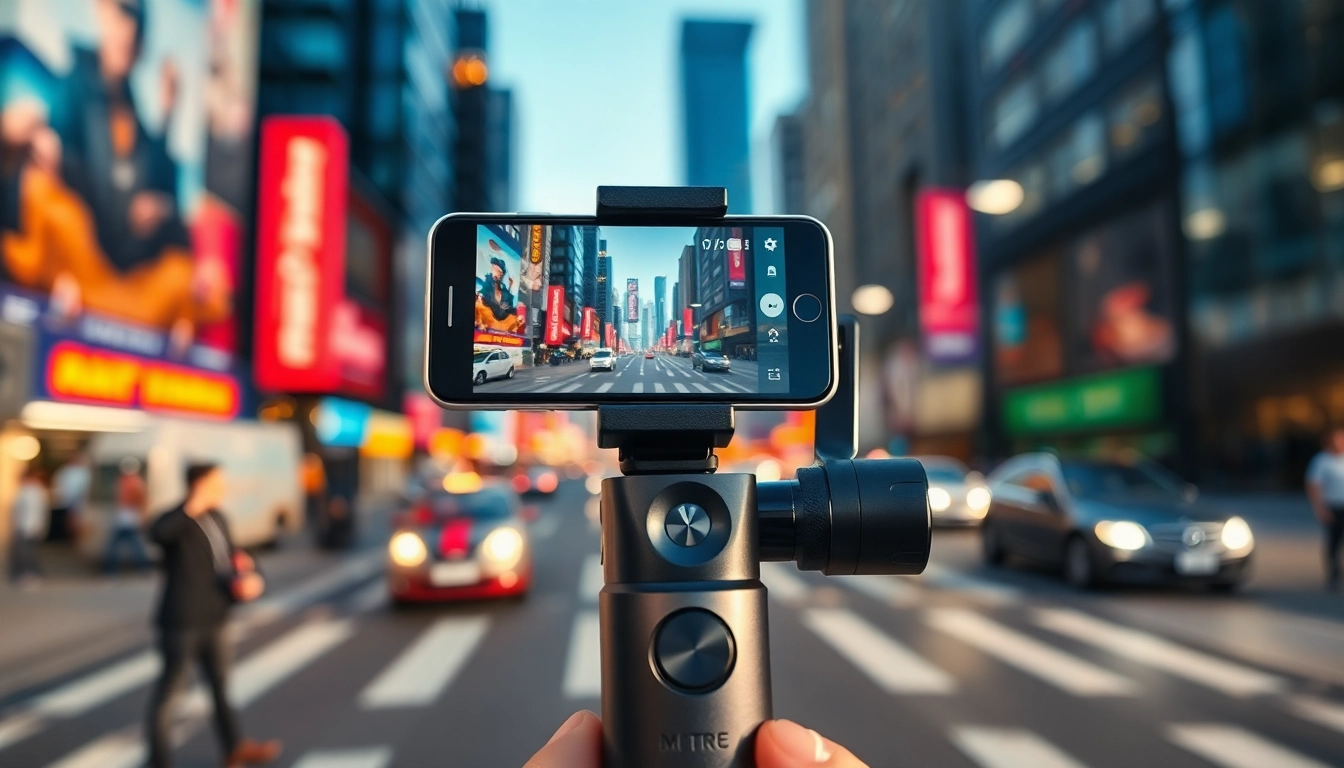
Enhancing Video Quality with a Handheld Gimbal: Techniques and Tips
Understanding the Handheld Gimbal: What It Is and How It Works
In the world of videography, achieving smooth, professional-looking footage can often be a challenge. This is where the handheld gimbal comes into play, revolutionizing the way we capture motion. A handheld gimbal is a device designed to stabilize your camera or smartphone, allowing you to record fluid videos without the unwanted shake that often accompanies handheld shooting.
Principles of Stabilization
At the core of gimbal technology is the principle of stabilization through a system of motors and sensors. These components work together to counteract the movement of the operator, providing a smooth filming experience. The fundamental approach is based on three axes: pitch (tilt), yaw (pan), and roll. By balancing the device around these axes, a gimbal can maintain the camera’s orientation and compensate for sudden movements.
Key Features of a Handheld Gimbal
Handheld gimbals come equipped with various features designed to enhance the user’s filming experience. Key features include:
- Three-axis stabilization: This allows for extensive movement correction in any direction.
- Quick setup and calibration: Most modern gimbals can be balanced and calibrated quickly, reducing the time between shots.
- Battery life: Longer battery lives ensure that you can shoot for extended periods without interruption.
- Smartphone integration: Many handheld gimbals offer compatibility with smartphones, often including companion apps for added functionality.
Types of Handheld Gimbal Systems
Handheld gimbals come in various forms and functionalities, catering to different needs and types of videographers:
- Smartphone gimbals: Compact and user-friendly, ideal for vloggers and everyday users looking for stabilization.
- Camera gimbals: Designed for DSLRs and mirrorless cameras, these gimbals support heavier equipment while maintaining balance.
- Multi-functional gimbals: Capable of accommodating different devices including smartphones, cameras, and action cams, offering versatility for various creators.
Benefits of Using a Handheld Gimbal in Videography
Improved Video Quality and Smoothness
One of the primary advantages of employing a handheld gimbal is the noticeable improvement in video quality. Shake-free footage becomes an accessible goal. By stabilizing the camera, any unwanted movement is effectively mitigated, leading to a more cinematic feel. This is especially significant in fast-paced scenarios, such as action sequences or while moving through crowds.
Increased Versatility for Different Shooting Styles
Handheld gimbals empower videographers to explore a variety of shooting styles. Whether you’re going for sweeping aerial movements or intricate close-ups, the adaptability of a gimbal increase the diversity of your footage. It also allows for innovative camera angles and perspectives, granting users the ability to be more creative with their storytelling.
Enhanced Movement and Creativity in Filming
With a handheld gimbal, smooth tracking shots, complex movements, and even advanced techniques such as time-lapses become easily attainable. This creative freedom can elevate the visual storytelling of your videos, captivating audiences and conveying messages more effectively. The ability to move fluidly with the subject enhances engagement, making your content stand out.
Choosing the Right Handheld Gimbal for Your Needs
Factors to Consider: Weight and Payload Capacity
When selecting a handheld gimbal, understanding the weight and payload capacity is vital. Each gimbal is designed to support specific weights and using it beyond its limitations can lead to poor performance or equipment failure. Consider the type of camera or smartphone you are using and ensure the gimbal can adequately support its weight.
Budgeting: Finding Affordable Options
The market is filled with gimbals at varying price points. It’s essential to determine a budget that aligns with the features that you require. While cheaper models may save you money upfront, they may not always deliver the same quality or functionality. Investing in a reliable gimbal can pay dividends in the long run through improved footage.
Compatibility with Your Gear
Compatibility with your existing gear is a crucial factor to consider. Ensuring that your handheld gimbal works with your devices, and has the necessary mounting options can save time and prevent frustration. Researching the specifications and reviews of gimbals that match your equipment can help narrow down your choices.
Tips for Mastering Your Handheld Gimbal Techniques
Best Practices for Setup and Calibration
To achieve the best results with your handheld gimbal, proper setup and calibration are essential. Start by balancing your camera or smartphone on the gimbal according to its instructions. Most gimbals allow for quick adjustment to achieve optimal balance – this step is crucial, as it allows the gimbal to function efficiently and aids in achieving smooth footage.
Recommended Camera Movements for Impactful Shots
Effective camera movements can significantly enhance storytelling. Some recommended movements include:
- Panning: Smooth side-to-side movements create a sense of space and environment.
- Tilting: Vertical movements can focus the audience’s attention and provide a view of the setting.
- Tracking: Following a moving subject helps convey action and excitement.
Post-Production Tips: Editing Stabilized Footage
While using a gimbal dramatically improves your footage, further refining in post-production is where magic happens. Use editing software to enhance the visuals, adjust color grading, and synchronize audio. The result is seamless footage that evokes emotion and engages audiences more effectively.
Common Challenges and Solutions When Using a Handheld Gimbal
Dealing with Weight and Fatigue During Extended Use
Holding a gimbal for extended periods can lead to fatigue. To combat this, consider ergonomic options or using a strap for support. Breaks during shooting can also help alleviate strain and maintain performance quality. Using lighter gear can reduce overall weight and make the setup easier to manage.
Managing Battery Life for Longer Shoots
Battery life is a common concern for videographers. Carrying extra batteries or power banks specific to your gimbal can ensure you’re prepared for extensive shooting sessions. Monitoring battery levels and planning your shoots around charging capabilities can minimize disruptions.
Troubleshooting Gimbal Malfunctions
Malfunctions may occur from time to time, but troubleshooting them often involves simple checks. Ensure that your device is properly balanced, the power is sufficient, and that all connections are secure. Familiarizing yourself with the user manual can also provide guidance on resolving specific issues.
